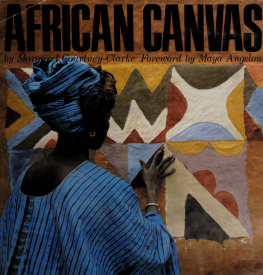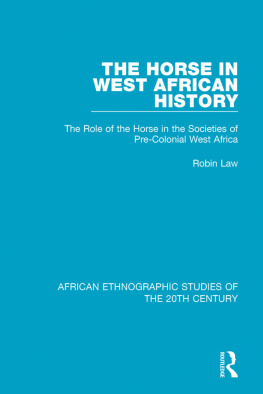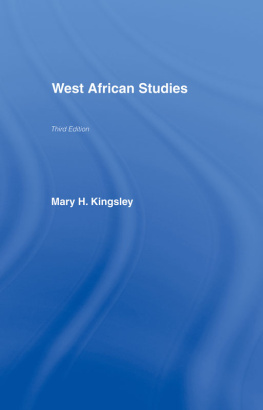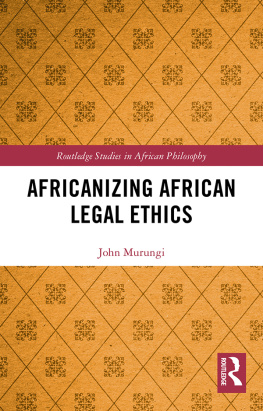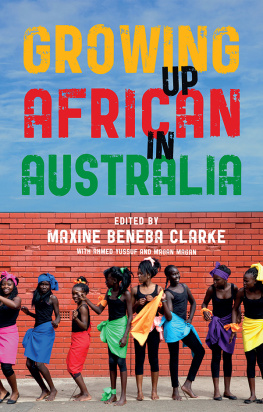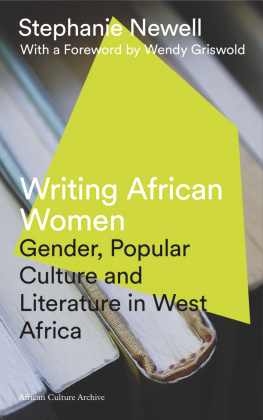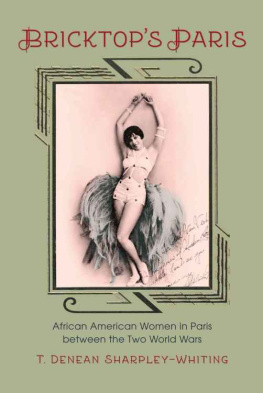
African canvas : the art of West African women
Courtney-Clarke, Margaret, 1949
This book was produced in EPUB format by the Internet Archive.
The book pages were scanned and converted to EPUB format automatically. This process relies on optical character recognition, and is somewhat susceptible to errors. The book may not offer the correct reading sequence, and there may be weird characters, non-words, and incorrect guesses at structure. Some page numbers and headers or footers may remain from the scanned page. The process which identifies images might have found stray marks on the page which are not actually images from the book. The hidden page numbering which may be available to your ereader corresponds to the numbered pages in the print edition, but is not an exact match; page numbers will increment at the same rate as the corresponding print edition, but we may have started numbering before the print book's visible page numbers. The Internet Archive is working to improve the scanning process and resulting books, but in the meantime, we hope that this book will be useful to you.
The Internet Archive was founded in 1996 to build an Internet library and to promote universal access to all knowledge. The Archive's purposes include offering permanent access for researchers, historians, scholars, people with disabilities, and the general public to historical collections that exist in digital format. The Internet Archive includes texts, audio, moving images, and software as well as archived web pages, and provides specialized services for information access for the blind and other persons with disabilities.
Created with abbyy2epub (v.1.6.8)
AFRKAN CANIN!
Photographs and text by Margaret Courtney-ClarkeForeword by Maya Angelou
Far from the influences of the Western world,there are peoples of West Africa who still live inthe traditional way*a way of life passed from onegeneration to the next. In these remote areasdistinct building traditions have produced visuallystriking vernacular architecture and decoration.Each year after the harvest, West African womengather to restore and paint their mud dwellingswhich have been washed clean by the relentlessrains of the wet season. With their hands asbrushes and the walls as their canvas, the womenset about creating an art whose composition,techmque, and treatment of color is as dynamic asthat of any Western painting. Enhancing anotherwise harsh landscape, the art form ispurely indigenous, from the mud used to build thewalls to the natural earth pigments and plantsgathered to make the colors. The motifs andpatterns that adorn the walls are a reflection ofthe lives of these women, illustrating theircommunal spirit and how they see the worldaround them.
African Canvas provides a glimpse into the homesof these very proud and dignified people. Over aperiod of three years, photojournalist MargaretCourtney-Clarke traveled through Nigeria, Ghana,Burkina Faso, Ivory Coast, Senegal, Mauritania,and Mali. The paths she chose were not easilyaccessible and the risks taken were often life-threatening, but the rewards are self-evident. Shewas allowed to enter the worlds of diverse ethnicgroups scattered throughout these countries andto document the various painted arts: the walls,pottery, and painted cloth.
Often lasting but a season, the painted walls arenot transportable and will not be found inmuseums and galleries. This book offers testamentto this noble art, and to the artists and theirlifestyle which gradually is merging with that of^^thi^West, soon to disappear forever.
l^PM
sKISiliM
Contents
ACKNOWLEDGMENTS 13FOREWORD Maya Angelou
INTRODUCTION 19COMPOUND 25PAINTING 69MOTIFS 155INTERIORS 185BIBLIOGRAPHY 205
This hook would not have been possible without thesupport, love and rare understanding of my belovedcompanion, Cesare Bellici, who died unexpectedly aftermy final field trip. He traveled with me in spirit and inheart. He guided me, he nursed me through emotionalturmoil and physical illness after each journey, and hegave me the courage each time to return to Africa. Ihave lost my friend and partner.
My fathers interest and concern on this project hasalways been closely felt and appreciated despite themany miles which separate us. Both my parents playeda vital role in teaching me about Africa and her way oflife. Without their wisdom and inspiration, I doubt thatI could have managed alone.
I gratefully am indebted to my friends and familyaround the world for their constant support andenthusiasm. In particular, I would like to thankLauren Shakely for getting me started on this enormoustask and for guiding it throughout with such warmthand sensitivity; Charles Mann who gave of his time andprofessional expertise to structure the outline and helpwith the development; Valerie Cannfor her generousassistance and inestimable trust in many, many ways;David Goldblatt for his drive and persuasion all thetimes I wanted to give up in despair; and MassimoVignelli who, once again through his insight into mywork, has expanded the vision of an art through hisdesign.
1 am most grateful, too, to Maya Angelou for herextraordinary enthusiasm and contribution. Herunderstanding of women, of Africa, and of lifesstruggles will enrich future generations.
At Rizzoli, I would like to thank all those I have workedwith over the past six years for making me feel at home.In particular, Gianfranco Monacelli for his unfailingreassurance and faith in my work and Solveig Williamsfor her personal involvement and dedication at alllevels and throughout the development of this book.
Next page
